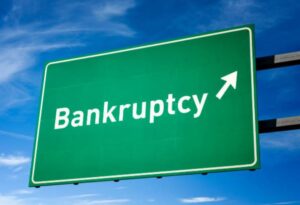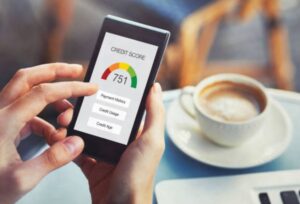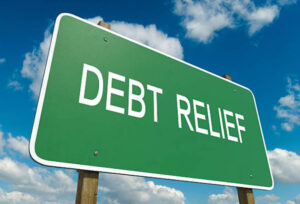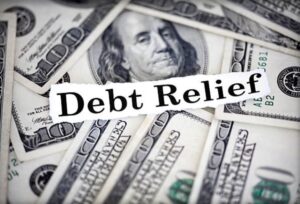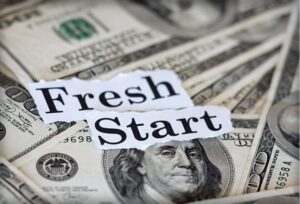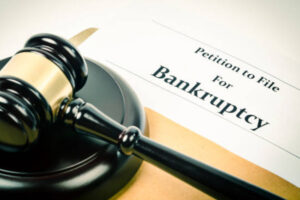Getting out of credit card debt can feel like trying to escape quicksand—the harder you struggle, the deeper you sink. If your mailbox is stuffed with bills and your phone buzzes non-stop with calls from creditors, know that you’re not alone.
It’s a tough spot, but hey, there’s good news: becoming debt-free is possible.
A key fact to remember is that the first step towards freedom involves choosing a payment strategy that works for you.
This article will walk you through various tried-and-true methods to tackle that daunting mountain of debt—from negotiating with creditors to changing how you manage your money daily.
We’ve got tips and tricks up our sleeves (and we’re ready to share) on turning what looks like an endless battle into a conquerable quest. Read on—you might just find the golden ticket out of credit card dungeon!
Strategies For Paying Off Credit Card Debt
Paying off credit card debt can feel like a wild ride, right? From clever methods like the avalanche and snowball ways to getting help from friends or finance pros, there’s a path for everyone.
10. Avalanche Method
The Avalanche Method is a smart way to tackle that mountain of credit card debt. It’s like aiming for the biggest, meanest snowball first and letting the momentum help you take down the rest! Here’s how it goes down:
- List all your debts from highest interest rate to lowest. It’s like making a scoreboard where the highest interest rate tops the chart.
- Keep paying the minimum on all your cards – no exceptions here! This way, you avoid nasty late fees and keep your account in good standing.
- Throw extra cash at the debt with the highest interest rate. Think of it like targeting your strongest enemy first – once it’s out of the way, everything else feels easier.
- Celebrate when you pay off one debt – then move on to the next. After conquering one peak, you’re ready to climb the next, using all that extra money from the first win.
- Repeat this process until you’re debt-free. It becomes a routine – pay off one, move to the next, and watch as your debt mountain crumbles!
- Enjoy saving money on interest over time. Thanks to targeting high – interest debts first, you end up keeping more cash in your pocket.
- Feel empowered as you see progress quickly on big debts. It might seem tough at first, but watching those big numbers fall is super motivating!
With this method, each victory builds up your confidence and speed toward becoming debt-free.
With this method, each victory builds up your confidence and speed toward becoming debt-free.
And let’s be real, who doesn’t love watching their biggest challenges disappear before their eyes?
Plus, imagine what you can do with all that saved interest money … Vacation? Emergency fund? The possibilities are endless – and exciting!
9. Snowball Method
So, you’re up to your eyeballs in credit card debt and looking for a life raft.
Good news! The snowball method is like that best friend who insists on organizing your closet when it’s a disaster zone – super helpful and strangely satisfying.
It zeroes in on knocking out your smallest debts first, boosting your morale one victory at a time. Let’s break it down, shall we?
- List all your debts from smallest to largest – Yep, every single one. This includes those pesky credit cards, the lingering student loan from that semester abroad, and even the $200 you owe Uncle Joe for covering last year’s unexpected car repair.
- Keep paying the minimum on all your debts – except for the tiniest one. For this little guy, you’re going all in. Throw any extra money you have at it like confetti at a parade.
- Celebrate that win! Paid off the smallest debt? Do a happy dance, then take the money you were putting towards it and attack the next one in line with everything you’ve got.
- Rinse and repeat – Each debt you erase gets crossed off your list (so satisfying), and the amount you can throw at the next one grows bigger, kind of like rolling a snowball down a hill.
- Watch as your debts disappear quicker than ice cream on a hot day – Seriously, seeing those numbers go down can be downright addictive (in the best way).
- Stay pumped – One of the coolest things about this method? It keeps you motivated by letting you see real progress as smaller debts vanish before tackling the big monsters.
This approach isn’t just about paying off what’s owed. It’s about gaining momentum and feeling like you’re actually getting somewhere – because guess what? You are!
Sure, it might seem slow at first glance but remember each debt paid off is a step closer to financial freedom.
Sure, it might seem slow at first glance but remember each debt paid off is a step closer to financial freedom.
So why not give it whirl? Your future debt-free self will thank you.
Do You Qualify For Debt Relief? See If You Qualify »
.
8. Balance Transfer Credit Cards
Moving on from the snowball method, let’s talk about something that might sound a bit more high-tech but is really quite simple: balance transfer credit cards. These are like secret weapons for fighting off high-interest debt.
You take all that expensive debt from other cards and move it over to a new card that says, “Hey, I won’t charge you any interest for a while.” This period can last up to 18 months or more.
Imagine not having to pay extra money just for the privilege of owing money.
Think of it as moving your debt from a noisy room into a quiet one so you can think.
Now, there’s some fine print – these cards usually have limits on how much you can transfer and sometimes they charge a small fee to make the switch. But if you play your cards right, you could save yourself heaps in interest charges.
Just make sure to read all the details and have a plan to pay down your debt before the no-interest party ends.
After all, saving on interest with balance transfers is cool … doing it without getting caught by surprise fees? That’s even cooler.
7. Personal Loans
Personal loans can be a smart choice to pay off credit card debt. They let you combine all your high-interest credit card bills into one payment with a lower rate. This means you could end up paying less over time.
Plus, it’s way easier to keep track of just one bill instead of several. Think about it like swapping out a bunch of noisy, clunky old fans for one strong, quiet air conditioner.
By going for a personal loan, you’re taking steps towards getting your financial house in order—not just putting a band-aid on it. Sure, you’re trading one kind of debt for another.
But if the new debt has friendlier terms (think lower interest and fixed payments), you’ve got yourself a deal worth considering.
But if the new debt has friendlier terms (think lower interest and fixed payments), you’ve got yourself a deal worth considering. It’s all about making your money work better for you while kicking those high-interest rates to the curb.
So yeah … it’s kinda like upgrading from an old flip phone to the latest smartphone—sounds pretty good when put that way!
6. Borrowing From Family And Friends
Borrowing from family or friends can seem like an easy way out of credit card debt. You might think, “Hey, they won’t charge me interest!” But tread carefully. Having a loan agreement is key to make sure everyone’s on the same page about payback terms.
It’s kind of like setting ground rules before you play a game – it keeps things fair and clear.
Lending and borrowing money within your circle can lead to tricky situations if not handled right. Imagine loaning money to your cousin and then seeing them splurge on a fancy vacation—that could sting! So, weigh the pros and cons seriously.
While family loans come with financial risks, they also offer a chance to clear debt without high interest rates tagging along. Just be smart about it—explore all borrowing options before making this very personal choice.
Working With Creditors
Talking to your creditors isn’t as scary as it sounds. Actually, they might help you find ways to pay off what you owe easier and faster.
5. Negotiating For Lower Interest Rates
Negotiating for lower interest rates with your credit card issuer can feel like a secret superpower. It’s true! A simple call to them, asking nicely for a rate reduction, might just work wonders.
Often, if you’ve been a good customer and have a history of on-time payments, they’re more than willing to consider it. This isn’t just about being friendly; it’s smart business for them too.
Keeping a reliable customer happy is worth the minor cut in interest rates.
Think of this step as your debt-fight move. You call up the card issuer and lay down your cards (pun intended). Explain how you’ve been loyal and prompt with payments but are finding the current rates challenging.
Don’t be scared to mention that you’re looking at other offers – sometimes, a little competition nudges them in the right direction. This conversation could lead to reduced interest charges and fees, making your journey out of debt smoother and quicker than you’d think possible.
4. Setting Up A Payment Plan
Setting up a payment plan with your creditors is like asking the teacher for extra time on an assignment—it shows you’re serious about fixing things. So, you chat with them and maybe even work with a nonprofit organization that knows the ropes.
They can help make a plan that has all your payments mapped out over 3 to 5 years. Think of it as a road trip itinerary but for paying off debt. Creditors often say “Sure, we can help,” by cutting down your interest rates or saying goodbye to some fees.
This makes the whole journey easier on your wallet.
Imagine turning a mountain of bills into a manageable path forward—setting up a payment plan does just that.
Imagine turning a mountain of bills into a manageable path forward—setting up a payment plan does just that.
Seeking Professional Help With Debt Relief
Sometimes, you just need a helping hand to show you the ropes. That’s where getting some pro advice on debt relief can be a game-changer.
3. Debt Management Plans
Debt management plans are led by credit counseling agencies that know how to handle overwhelming debt. They come up with a plan to pay off your debts in 3-5 years and get you lower interest rates.
Think of it like having an expert guide who takes you through the jungle of debt, hacking away at the high-interest rates and clearing a path for you.
These nonprofit agencies advise on good money management and how they can squeeze your debts into something more manageable. It’s like getting a cheat sheet for Financial Management 101, but this time, it’s your money they’re helping to save.
Now, onto considering bankruptcy – another scary option but might be necessary for some situations.
2. Bankruptcy
Bankruptcy could be your ticket out of credit card debt if you’re really in a tight spot. Think of it as hitting the reset button on your finances. You’ll need to chat with a bankruptcy attorney to get the ball rolling.
If you decide to go down this road, remember you’ve got to prove you tried counseling and worked up a debt repayment plan first.
It’s like admitting defeat, sure, but sometimes you’ve got to lose the battle to win the war against debt. Filing for bankruptcy isn’t fun and does come with consequences—like taking a hit on your credit score.
But if financial distress has got you cornered, it can give you breathing room and help kickstart your journey back to solvency. Just make sure it’s really your last resort because once you play this card, there’s no going back for a while.
1. Debt Settlement And Relief
Debt settlement can be a beacon of hope for those drowning in credit card debt. It’s all about making a deal with your creditors to pay back less than what you owe.
Think of it as haggling at a market, but instead of bargaining for a better price on fruits, you’re negotiating your way to financial relief.
You offer to pay a lump sum upfront, and in return, they cut down your total debt amount. This move can save you some serious cash and make that mountain of debt look more like a molehill.
Going this route might seem like taking the easy way out, but it’s not without its challenges. It requires some tough negotiation skills and could impact your credit score in the short term.
Yet, if heavy debts are pushing you to the edge, settling could provide that much-needed ledge to catch your breath financially.
If you are not sure how to do this, it’s best to seek professional assistance from companies that specialize in debt settlement and relief.
If you are not sure how to do this, it’s best to seek professional assistance from companies that specialize in debt relief.
After considering debt settlement as an option, it’s key to also weigh other strategies—like managing expenses or seeking professional advice—to tackle that daunting credit card debt head-on fully.
Take That First Step Today
So, tackling credit card debt? You’ve got this.
The avalanche and snowball methods are like your new best friends – pick one, and start chipping away at those balances.
Don’t forget about balance transfer cards and personal loans. They can be real game-changers.
Chatting up your creditors for better rates or a sweet payment plan might feel awkward but can save you heaps in the long run.
And hey, if things get too hairy, there’s always professional help to guide you through the rough patches.
Just remember: every bit you pay off is a step closer to financial freedom – so go on, take that first step today!

